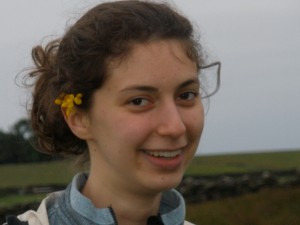Engaging in the Gulf
 Former Leslie Lab member Katherine Siegel, now at research assistant with UC Santa Barbara’s Sustainable Fisheries group, authored this personal essay for Heather’s course on engaged environmental scholarship and communication. Read on to learn more about Katherine’s undergraduate research on the human and ecological dimensions of Mexican small-scale fisheries.
Former Leslie Lab member Katherine Siegel, now at research assistant with UC Santa Barbara’s Sustainable Fisheries group, authored this personal essay for Heather’s course on engaged environmental scholarship and communication. Read on to learn more about Katherine’s undergraduate research on the human and ecological dimensions of Mexican small-scale fisheries.
Arcángel sighed, pulled up his last hand-line, and restarted his motor. “There are just no bait fish here,” he explained as he steered away from Isla Cerralvo’s rocky shore. “The shrimp boats come over and they catch everything. Nothing left for us.”
I was on the water for the day with Arcángel, a fisherman who had witnessed the transformation of Mexican fisheries from the era of open access to today’s strict rules and population crashes. I started the day secretly hoping we would not catch much because I did not want to kill anything. Now with Arcángel’s economic reality sinking in, I felt guilty for bringing him bad luck.
In May of 2012, I visited La Paz, a small city on the Gulf of California, excited to talk to local fishers and hear their ideas about fishery regulations. I wanted to learn their stories. I quickly discovered, however, that they were not interested in talking to conservation scientists. A woman’s cheerful face hardened when I asked her what she thought of marine biologists. She told me that for her, scientists meant increased regulations, closed fishing grounds, and lost income. While both environmentalists and fishers want a healthy, productive Gulf that can support humans, conservation organizations have failed to highlight this shared goal, instead alienating fishing communities by depicting their livelihoods as fundamentally unsustainable.
My trip with Arcángel convinced me of the need to involve local resource users in conservation decisions. While I had previously understood this concept abstractly, my research in La Paz showed me that successful conservation begins with the community and takes account of cultural, ecological, and economic values. I spent the next several months struggling with how to relate my thesis project to this ideal, with La Paz and the Gulf of California as the backdrop to my studies.
During my month in La Paz, I soaked up as much knowledge and experiences as I could. At first I focused on the life history traits of species targeted by commercial and sports fishers. I spent a week reading undergraduate and masters-level theses in the libraries of research institutions and the local university, learning about the average body length at sexual maturity of sardines and the seasonal migrations of jumbo squid. Researchers talked to me about their work, describing the technique for determining the sex of green abalone and the diet of spiny lobsters.
Next I dove into the world of small-scale fishers. Leila, the post-doc with whom I was in Mexico, invited me to come along for a day while she interviewed fishermen in the dusty seaside town of Los Barriles. We spoke with a fisherman who had worked on the water for more than forty years and he told us all about his faithful boat. We spoke with younger fishermen who stood in the shade of their patios holding their children and telling us about the advantages and disadvantages of taking tourists out sport fishing for marlin and dorado. We spoke with the wives of fishermen, who told us their opinions about a new national park down the coast from their homes. Later in the week, Leila and I went out fishing for the day with Arcángel. He explained that the fishing grounds have become less fruitful over the years and attributed the changes to the huge industrial fishing boats that now visit the area.
Finally, I explored the world of protected areas and conservation organizations in the Gulf of California. I met Cristina and Diana, two women who work for The Nature Conservancy in Mexico, creating conservation plans for the region. Their innovative program seeks to conserve nature for people, not from people: they want to include local people in the conservation process and ensure that they reap the benefits of conservation. I camped overnight at Isla Espíritu Santo, a national park off the coast of La Paz. At the island I snorkeled with sea lions, played with bioluminescent jellyfish, watched whales swim by at sunset, and visited a fishing camp.
All of these experiences brought me to the question of how to meaningfully integrate human needs and ecological conservation. I hope that my work with ecological resilience, institutional capacity, and ecosystem services will help The Nature Conservancy achieve this goal, so that Arcángel can continue to fish around Isla Cerralvo and the whales and sea lions at Isla Espíritu Santo can continue to inspire visitors.
